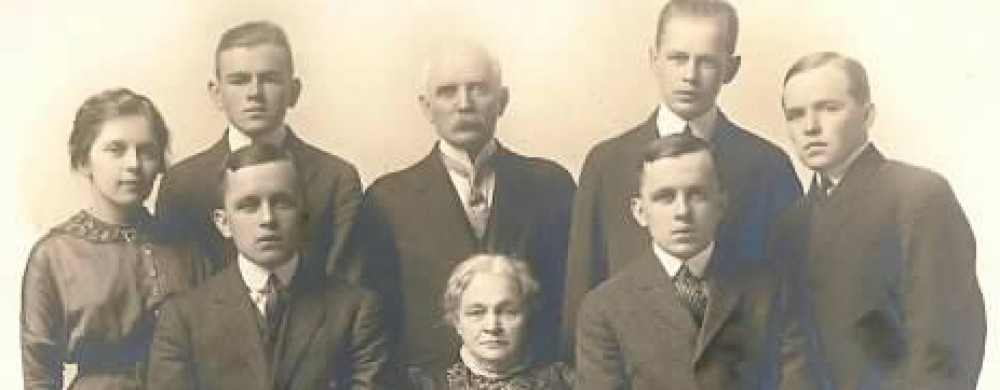For this profile, I picked a 3rd-great-granduncle who shares my birthday (albeit about 140 years apart), James Gilbert Wiggins (1815-1903), born in Gagetown, Queens County, New Brunswick, to Jacob Fowler & Elizabeth Ruth (Slocum) Wiggins. [1]
Thus far, I’ve been spoiled by Canadian provincial archives online collections, especially those for New Brunswick, where most of my loyalist families ended up in 1783). In this WIGGINS line, I discovered a few folks who settled on Prince Edward Island, a completely new research locale for me. Prince Edward Island is not as easy to research, thank goodness, there are good church records [2] and between those, census records, [3] and Find A Grave, I was able to sketch an outline of the James G. Wiggins story.
James never knew his father, Jacob F. Wiggins, who died the same year he was born. As he was the youngest among 17 children, he had a mother and lots of older siblings to help care for him. His older brother, the Reverend Abraham Van Guelder Wiggins (Rev. A. V. G. Wiggins) (1804-1856) was perhaps, a key influence in James’s life, as he lived on Prince Edward Island and officiated at James’s marriage there to Eleanor Compton Green in 1840.[4]
James and Eleanor first lived in Queens County, New Brunswick as their daughters, Virginia Esther (1841) and Sarah Amelia (1843) were born there. The move to Prince Edward Island occurred after Sarah’s birth and before that of William in 1845, who baptized by his uncle, the Rev. A. V. G. Wiggins. Elizabeth in 1848 and John in 1850 were also baptized by their uncle into the Anglican Church.
The Wiggins family of Prince Edward Island added four more children: Abraham (1855), Helen (1857), Samuel (1859) and James (1864). James was said to have become “a wealthy farmer and manufacturer of Summerside Prince Edward Island” around 1876 when E. Stone Wiggins published The History of Queens County in the newspaper, the Watchman. Thus far, I haven’t found evidence to corroborate that assertion. I expect there is some sitting in an archive on the island.
Eleanor Compton (Green) Wiggins died at 65 years in 1882, [5] having given birth to nine children and seen her youngest reach manhood. Her widowed husband, married a year later.
James, 68, traveled back to New Brunswick to wed a woman 28 years his junior, Eliza A. Ballantine in Westfield, Kings County. The Daily Telegraph of Saint John, NB carried the following:
m. Westfield (Kings Co.) 7th inst., St. James Church, by Rev. A.V. Wiggins, A.B., rector, assisted by Rev. H.T. Parlee, curate, James G. WIGGINS, Esq., Alberton, P.E.I. / Eliza A. BALLENTINE d/o late Thomas BALLENTINE, Esq., Westfield.[6]
Did you notice the officiant is Rev. A. V. Wiggins? Not Rev. A. V. G. Wiggins, James’s brother (he died in 1856). I believe, this is Abraham Valentine Wiggins, James and Eleanor’s third son. The next step is to prove it.
Sources:
[1] Wiggins, E. Stone. The History of Queens County. NB: Queens County Historical Society, 1993. Rec. Date: 8 Jul 2016.
[2] Finding Your Canadian Story (blog by Candace McDonald) | Prince Edward Island Ancestors: PEI Church Records on Family Search
[3] Library and Archives Canada – Genealogy and Family History.
[4] “Prince Edward Island Marriage Registers, 1832-1888,” FamilySearch (https://familysearch.org/ark:/61903/1:1:QVBJ-KJ7Z : 11 March 2018), citing , Prince Edward Island, Canada, Public Archives, Charlottetown; FHL microfilm 1,630,091.
[5] Find A Grave (http://www.findagrave.com/ : accessed 9 Mar 2020), Find A Grave Memorial no. 58191529, citing Saint John’s Anglican Church Cemetery, Saint-Eleanors, Prince County, Prince Edward Island, Canada.
[6] Provincial Archives of New Brunswick (http://archives.gnb.ca/ : accessed 8 Mar 2020); Daniel F Johnson’s New Brunswick Newspaper Vital Statistics. Daniel F. Johnson : Volume 59, Number 521, Date June 8 1883, County Saint John, Place Saint John, Newspaper The Daily Telegraph.


